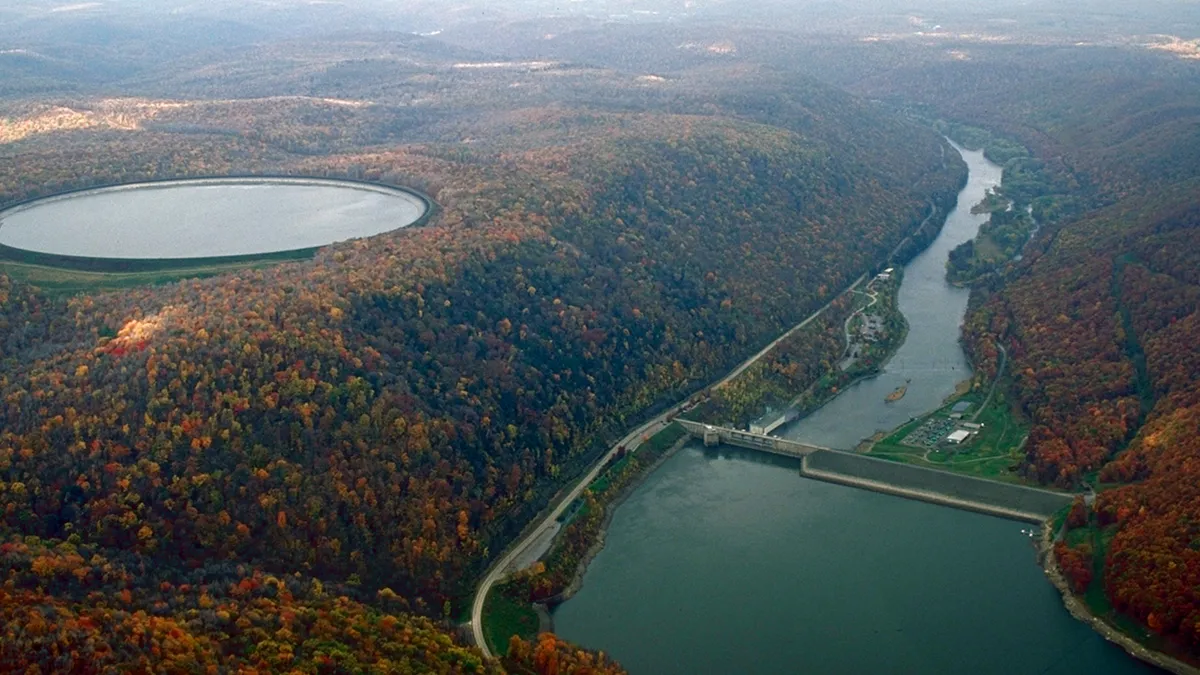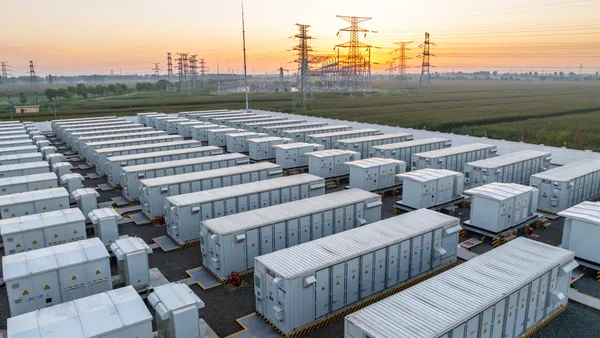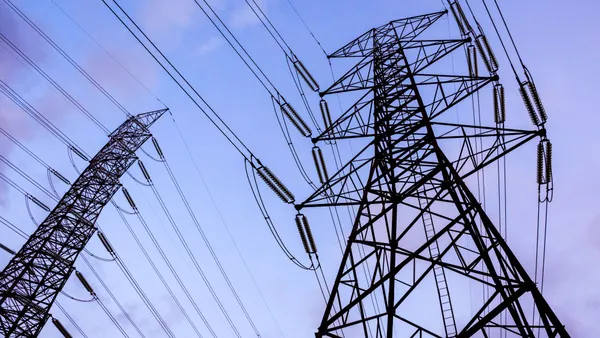Houston-based Quidnet Energy is combining conventional pumped hydroelectric storage technology with existing drilling technology to provide long-duration energy storage for utilities and renewable energy developers.
Quidnet just secured $10 million in Series B financing and landed a contract with the New York State Energy Research and Development Authority (NYSERDA) for a commercial demonstration of its technology, CEO Joe Zhou told Utility Dive in an interview this week. The NYSERDA project will evaluate the performance of the technology, the ability to tie it into the grid, and the quality of power generated, according to Zhou.
Long-duration storage will play a critical role in achieving renewables goals, according to experts.
"Given the variable availability of energy from renewable sources, it's important to find new methods of long-term storage," Nathanael Greene, senior renewable energy advocate for the Natural Resources Defense Council told Utility Dive.
However, the demand or need for long-duration storage may not materialize for 10 to 20 years, according to an analyst with Wood Mackenzie Power and Renewable Energy.
"I don't see a major demand for long-duration storage happening in this decade," Daniel Finn-Foley, head of energy storage at Wood Mackenzie told Utility Dive. "These are investments with an eye on the horizon as opposed to immediate commercialization," he continued.
Quidnet's investors include Bill Gates' Breakthrough Energy Ventures, Evok Innovations, Trafigura, and The Jeremy and Hannelore Grantham Environmental Trust. The NYSERDA project will be a 2 MW scale implementation of Quidnet's technology.
Quidnet's closed-loop, geomechanical pumped storage (GPS) method pumps water under pressure into subsurface wells that is then released as needed to drive turbines to generate electricity. Water collected in an on-site pond is then repumped into the well for ongoing storage.
"NYSERDA is interested in better understanding how Quidnet's approach works in the geological formations common in New York," a NYSERDA spokesperson told Utility Dive by email.
"Long-duration storage is anticipated to be part of the future energy system in New York. This demonstration project will also help prove the technical efficacy of this approach, provide greater clarity on the costs of this approach and help New York gain familiarity with the unique siting and permitting required for underground pumped storage," according to NYSERDA's spokesperson.
Zhou sees the NYSERDA project as commercial-scale demonstration of a single module that could be aggregated on a larger scale. Zhou compared aggregated GPS modules to an onshore wind farm that is an accumulation of tens to hundreds of individual wind turbines.
"We're looking to demonstrate that one module that can be aggregated into fuller scale facilities. We're demonstrating the building block at a commercial scale," Zhou said.
"This project also will help set the development framework for future projects," he continued. "How do we construct the leases? What do the permits look like?"
Quidnet's method could address the limitations of conventional pumped hydro storage, according to Zhou. "Traditional pumped hydro has been limited to mountainous regions. Using this new format, we're able to bring it to a much broader set of regions and geographies for deployment," he said.
Wood Mackenzie's Finn-Foley acknowledged the limitations of traditional pumped hydro storage.
"In the case of conventional pumped hydro, you need to have a large upper reservoir and a large lower reservoir and a pretty significant gap between the two," Finn-Foley said.
"Anywhere those conditions already exist, there generally already is a system there," he continued.
Familiar technology
Utilities are quite familiar with hydroelectric generation and pumped hydro storage, according to Zhou.
"We've spoken with a lot of utilities. Pumped hydro is a very well-known technology. To be able to bring that to a much wider geography at much lower costs in smaller modules is very exciting for them," he said.
"We're looking to provide that long-duration pumped hydro type of storage at less than half the price," he continued. "Initially, we will focus on regions that have an abundance of geologic data. That will help us understand a lot about the rocks without having to go out and get the data ourselves."
Quidnet's siting procedures involve a comprehensive set of assessments, including seismic activities and a site's prior use, according to Zhou. The company primarily uses freshwater for its ponds and wells but may add the types of biocides that might be used in a municipal drinking water supply or swimming pool.
"What's unique about Quidnet is we're tapping into supply chains that are tremendous in scale," he said. Existing supply chains at Quidnet's disposal include drilling, industrial machinery, and hydroelectric turbines. With its recent investments and pending projects, Quidnet can begin expanding its team and establishing relationships with regional suppliers, according to Zhou.
Storage for the grid of the future
Wood Mackenzie's Finn-Foley finds it interesting that funds are making investments in a wide variety of long-duration storage technologies.
"These really are investments in the grid of the 2030s, the 2040s, when these 'Green New Deal' style programs start reaching very high renewable energy penetration," he said.
"By casting a wide net, these investment funds are betting either that one of these technologies will emerge as the storage technology of choice or that all of these technologies will have a place at various durations, for various needs," he continued.
Current storage needs, particularly in the United States, have a duration of about four hours, according to Finn-Foley.
"That's because the main application for storage right now is shifting energy from times of low demand to times of high demand," he said.
"There will be a need for long-duration storage if these 100% clean or renewable targets actually have teeth and there's the political will to go from 80% or 90% renewables all the way to 100%," he continued.
Then, there will be a need for long-duration storage to smooth out the intermittent capacity of renewable sources.
"Depending on the type of resource and how intermittent it is, you may need tens of hours or even hundreds of hours to ensure that electricity is there when you need it," Finn-Foley said.
This is a need battery technology cannot practically provide, according to Zhou.
"It's actually quite hard for batteries to be cost-competitive at those levels," Zhou said.














